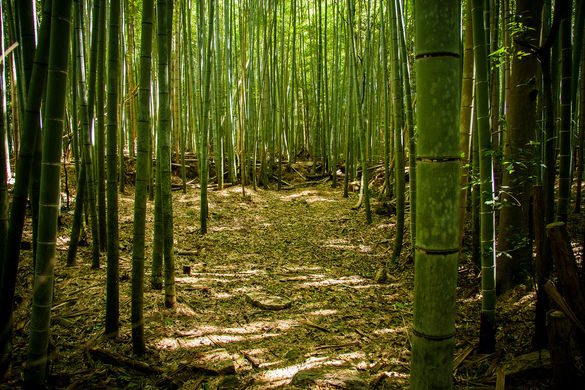

When is Bamboo Good for the Planet?
Everyone knows bamboo as a panda’s favorite snack… but did you know that bamboo is also a trailblazer in the eco-friendly movement? This durable, green grass surpasses other common hardwoods when it comes to durability, strength, and sustainability. So why bother asking “when is bamboo good for the planet?” While bamboo may seem like a no-brainer–but in some cases, it doesn’t quite meet the mark.
A sustainable swap
Typically coming from the moist, tropical regions of Southeast Asia and Africa, this unique plant species has grown to be quite adaptable. Even popping up in southern regions of the USA, bamboo is becoming increasingly accessible to American consumers, with new bamboo products like straws, home goods, and utensils appearing as durable alternatives to plastic. Cultures globally have relied on bamboo for centuries, and with new technology, it has tons of potential to eclipse plastic, wood, and other traditional materials!
Growing bamboo is so easy, you basically plant it and leave it alone. As a grass, bamboo is extremely adaptable and resilient. Pair that with it’s speedy growth rate and natural self-regeneration, and it’s a gardener’s dream come true! Plus, this little plant doesn’t need petrochemicals or artificial pesticides to grow big and strong, making it both cost effective and chemical-free. Growing up to 3.5 feet a day, bamboo is truly a renewable resource. Let’s put that in perspective: the average oak tree grows about twelve inches annually… meaning the bamboo plant grows over 1,000 times as fast as oak!
When to love it…
In its untouched form, bamboo wood is a great eco-friendly alternative to slow growing, high maintenance woods. The dense wood construction makes it awesome for kitchenware products like spoons, plates, and bowls, as well as fences, furniture, hardwood floors, and much more! Unlike traditional wood, natural bamboo has no rays or knots, which lets it withstand high amounts of pressure. These dense fibers give the plant extreme flexibility, allowing it to bend (but not break!). Plus, it naturally pest-resistant, thanks to the high silica content that combats termites, bugs, and critters.
When bamboo isn’t best…
We love bamboo when it’s in a raw form, but not all bamboo is created equal. Have you seen bamboo shirts? How about bamboo bedsheets? Bamboo can turn into fabric in a few different ways. Some businesses mechanically comb out the bamboo fibers, then spin that into a bamboo fabric. This is typically more expensive than traditional fibers, and it doesn’t have that silky soft feel that we’ve come to love. So, some companies turn to more serious measures…
To make luxurious, soft bamboo fabric, the plant has to get hit by some serious chemicals. The bamboo stalk is dissolved by a toxic liquid made from sodium hydroxide and carbon disulfide. These toxins transform the stalk into long cellulose strands to make textile fibers. These fibers are then used to make bamboo-based rayon and viscose–two well-known fabrics in the industry being advertised as being “green”.
This yucky process is just as bad as it sounds. Carbon disulfide is toxic, and exposure to it can lead to some horrible health impacts, especially on the reproductive system. Carbon disulfide can evaporate into the air and then condensate into rain, which ends up in our waterways, adding to our global pollution. So, while growing and harvesting bamboo might beat cotton, it can have a slew of nasty environmental side effects due to all the chemicals. So next time you’re shopping, don’t simply buy products that are “Made from Bamboo”–look for bamboo-based rayon and viscose, and say “no thank you!”.
The final verdict
From bamboo utensils to speakers to kids’ play sets, bamboo can be used for so many things. While there is no bamboo fabric on the market that’s produced in a way we’re excited about, we are always looking forward to technology that will help get us there! Until then, let’s focus on awesome products made from bamboo in its hardwood form. From bamboo straws to molded bamboo, this handy plant is taking the world by storm. And while bamboo isn’t sustainable in every form, we do stand by bamboo when it still looks like bamboo. What do you think?
Comments
Read Elephant’s Best Articles of the Week here.
Readers voted with your hearts, comments, views, and shares:
Click here to see which Writers & Issues Won.








